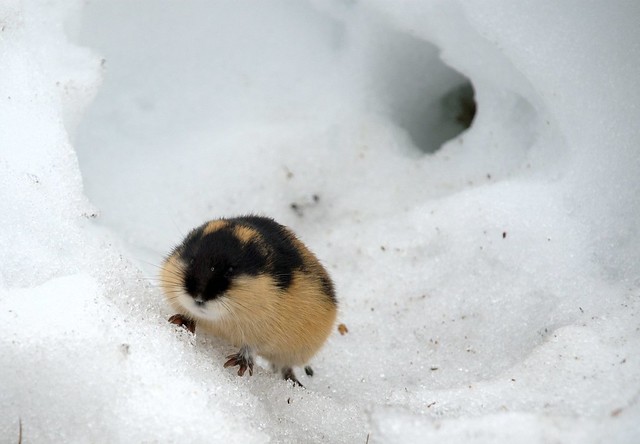Alumni Spotlight: Nils Christian Stenseth
23 years ago, Nils Christian Stenseth led a project at CAS that he describes as instrumental for his further career. The Mystery of the Lemming Cycle aimed at better understanding regular population cycles, such as those of the lemmings, which peak every 3-5 years (depending on where they are).
Until last year, Stenseth was the Director of the Centre for Ecological and Evolutionary Synthesis (CEES), a Centre of Excellence. The long-bearded professor has been honoured with several prizes, the most recent one from the International Ecology Institute (ECI) for his outstanding research in marine biology.
Could you shortly describe what the Mystery of the Lemming Cycle was about?
The CAS project I lead during the academic year 1996/97, set out to better understand regular population cycles. An example is the lemming cycle with peak abundance at regular intervals. It peaks every 3-5 years depending upon where it is; shorter in the southern part of Fennoscandia and longer in the northern part.
It should be emphasized, though, that although we had “lemmings” in the name of our CAS project, we worked on other similar systems as well, one of which being the hare-lynx cycle, particularly as seen in Canada. We aimed at better understanding the nature of the cycle (e.g., why the regularity?), and why it differed from one place to another (e.g., why is the lemming cycle shorter in the southern part than in the northern part of its range of distribution?).

What do you remember best from your year at CAS?
I do in particular remember how well the staff took care of us. We didn’t have to ask them for help, they simply did what was needed – and much more! We really could focus on the science – which we certainly did.
Universities have much to learn from CAS. I’ve argued again and again, that there should be more support-staff for the scientist where science is done. Unfortunately, at the Norwegian universities current change goes in the opposite direction – too much administrative support centrally and too little where the science (and the scientific training of PhD students and post docs) is done – leaving the scientist to do administrative work they are not really trained for. At CAS, the administration took care of all practical issues, which they did much more efficiently than we scientists would ever been able to.
I look back at my stay at CAS with great pleasure. The foundation for several of the papers I’m most proud of was laid down during that year – papers that were later published in Science and Nature – as well as in the more specialized literature.
I also remember the lunch breaks, not only the very good food, but most of all the discussions with the other groups (psychology and linguistics when I was there).
In the abstract of your CAS project, you wrote:
A breakthrough in understanding the small rodent fluctuations is a breakthrough in understanding the functioning of the entire arctic ecosystem.
Can you elaborate a bit? To put it in a wider societal context, can you say anything about what impact climate change has on fluctuations and lemmings?
I am happy I did write that – I would have done the same today. We learned a lot about regulating factors within and between populations (predation, competition for food and other so-called biotic factors) and non-biotic factors such as climate. One such breakthrough was our understanding of how the hare-lynx cycle in Canada is structured by large-scale climate phenomena, such as the North Atlantic Oscillation, which translate to the properties of the snow – which in different ways are important for both the hare and the lynx. We had a paper in Science, which directly resulted from the CAS work of ours. Much later, we published a paper in Nature explaining how the snow-conditions – not the least when the snow settles in the fall – affect the regularity of the lemming cycle. Specifically, the regularity of the lemming cycle depends on the snow in the fall not melting so that a subnivean space can build up – which is important for the lemming to survive well and even reproduce during the winter.
What has happened in your career since your stay at CAS?
My period at CAS has been instrumental for much of my later career. Essentially it laid the foundation for what later became the Centre for Ecological and Evolutionary Synthesis (CEES at the University of Oslo) – a center which was a Centre of Excellence from 2007 till 2017. Although the effect of climate variation was not a key topic during my CAS period, much of my later climate-variation work has in several respects its foundation during that period – where we developed methods for analyzing how climate could affect ecology directly, and also indirectly in interaction with other biotic and abiotic factors.
Thomas F. Hansen was fellow on your project in the 90s. He just arrived at CAS as a project leader himself. What advice would you give him and to future CAS project leaders?
Concentrate on the work you’ll be doing during your academic year at CAS. Don’t focus on publishing papers – papers will come in due course based upon the work you’ll be doing at CAS. And overall, do focus on the “big” and “conceptual” questions. Indeed, asking the right question is imperative: Do remember what the statistician Edwards Deming once said: “If you do not know how to ask the right question, you discover nothing”.